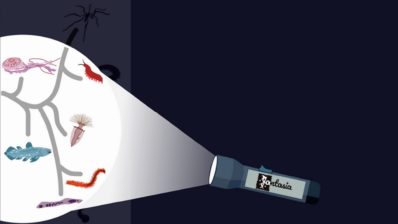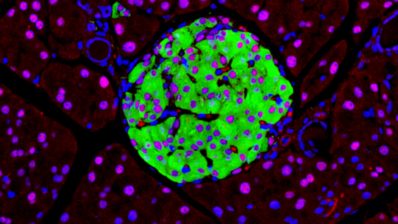Animal experimentation has been key throughout history for numerous advances in many fields of science and medicine. However, it also raises important ethical questions about the use of animals for human benefit.
In recent decades, the controversy surrounding this practice has led to significant regulatory improvements. One example are the 3Rs principles formulated back in the 1960s that call for concrete actions to achieve Replacement, Reduction, and Refinement in the use of animals in research. European Union regulations are also becoming increasingly stringent, demanding a gradual reduction in the use of experimental animals.
However, in many cases, animals are still essential for research and are even legally required in the safety assessment of medicines and chemicals intended for human use.
Control groups
“When using animal models in basic research projects or preclinical studies that assess the efficacy and safety of new therapeutic approaches, some animals receive the active ingredient or molecule under study, while others do not. The latter – the control group – are essential for obtaining results that, when compared with those observed in the treated animals, allow us to distinguish the effects associated with the treatment from those due to the animals themselves or environmental factors”, explains Joan Antoni Fernández Blanco, head of the PRBB animal facility.
Control animals represent 25% of the animals used in drug and chemical safety studies.
Now, the European project VICT3R (Virtual Control animals 3R), coordinated since this September by Ferran Sanz of the Department of Medicine and Life Sciences, Pompeu Fabra University (MELIS-UPF), aims to use data from previous studies to create virtual control models that could replace real control animals used in safety evaluation studies of drugs and other chemical substances. To achieve this, they will apply data science and artificial intelligence to the vast amount of data accumulated by the pharmaceutical industry over the years.
Reuse, data sharing, and data science
According to Ferran Sanz, professor at UPF and project coordinator, “the reuse and sharing of data, as well as the application of new data science techniques, provide great opportunities to implement the 3Rs principles in the use of animals in preclinical experimentation.”
This is exactly what the VICT3R project aims to do: reduce the number of animals used in drug safety or toxicity studies.
“We will analyze historical data from the pharmaceutical industry and use generative artificial intelligence methods to recreate virtual animals that can replace control animals”
Manuel Pastor, MELIS-UPF
“We will analyze historical data from the pharmaceutical industry’s preclinical evaluations of drugs involving real animals. But in cases where there isn’t enough data, we will use generative artificial intelligence and machine learning methods to create completely synthetic virtual animals”, explains UPF professor Manuel Pastor, who will be in charge of coordinating the application of artificial intelligence algorithms.
Good for animals and for your wallet
According to the research teams, these virtual models will bring both ethical value and economic benefits by reducing the use of animals.
Animal research is very costly. “To put it into perspective, it can cost between 10 and 100 times more than an equivalent in vitro or in silico study,” explains the PRBB animal facility director. Thus, from a purely economic standpoint, animal research would not be the first choice. “If it is carried out, it is after exhausting the more economical alternatives and when it is considered essential to obtain certain crucial information that cannot be obtained through other methods”, he concludes.
“Animal research is very costly, between 10 and 100 times more than an equivalent in vitro or in silico study. It is only used when essential.”
Joan Antoni Fernández Blanco, head of the PRBB animal facility.
The generated information will be accessible not only to the consortium partners but also to regulatory bodies to demonstrate the validity of the virtual control animal concept.
“Virtual animals make sense in studies conducted under very controlled conditions, such as those required by chemical or pharmaceutical companies to obtain marketing authorizations. Applying these techniques in other areas is not as straightforward, but it will be studied to see if the concept can be extended to other studies in academic settings”, says UPF professor Olga Valverde, who will co-lead this part of the project.
A project with a history at PRBB
The project held its first meeting on September 26-27 in Barcelona. VICT3R will last for three and a half years and is part of the European public-private initiative Innovative Health Initiative (IHI). It has a budget of 28 million euros, funded approximately 50% by public and private sources. Thirty-three institutions are participating, including 19 pharmaceutical companies leaders in their sector.
Although VICT3R is just starting this September, the concept of Virtual Control Groups (VCG) was born from the eTRANSAFE project, also coordinated by Ferran Sanz from PRBB. That project aimed to improve the quality of toxicity tests conducted on potential drugs before they are tested on humans. Using the vast amount of preclinical testing data that pharmaceutical companies had accumulated over the years, the eTRANSAFE research teams realized that control group data could be leveraged to create virtual control groups and demonstrated the viability of the VCG concept.
Now they aim to refine the methodology so that virtual controls can be practically used while maintaining the highest standards of scientific practice, allowing them to be used in the evaluation of new drugs by regulatory agencies.
“What we want is to achieve regulatory acceptance of virtual control groups”
Ferran Sanz (MELIS-UPF)
“We plan to present the results to various regulatory bodies and start discussions so that this methodology can be accepted. We are confident they will take it into consideration”, says Pastor. He adds, “It is our responsibility to generate convincing evidence that its application does not compromise the scientific validity of the studies and that they protect the population as well as or better than current studies.”
The international team is confident that it has the experience and capacity to change the regulatory paradigm in preclinical safety testing. “Ultimately, what we want is to achieve acceptance of the VCG concept by regulatory agencies”, concludes project leader Ferran Sanz.
If they succeed, it will be a giant step forward in applying the 3Rs to animal experimentation and achieving a better balance between the ethical use of animals in research and scientific progress.







